Huang Group News
Biophysical Society Annual Meeting (BPS 2026), San Francisco, United States, 2026
Co-Chair 2025-2026, Single-molecule Forces, Manipulation and Visualization Subgroup, Biophysical Society
https://www.biophysics.org/2026meeting
Feb 21, 2026
The Single-Molecule Forces, Manipulation, and Visualization Subgroup of the Biophysical Society will host a symposium on Saturday, February 21, 2026 in San Francisco, California, United States. We are excited to feature two keynote speakers: Prof. Taekjip Ha from Boston Children‘s Hospital, Harvard Medical School, and Prof. Scott Blanchard from St. Jude Children’s Research Hospital, along with other leading global experts in the field of single-molecule biophysics. Save the date and join us for this exciting event!
We welcome sponsors interested in supporting single-molecule research and community-building initiatives. For more information, please feel free to reach out to Jinqing (jqhuang@ust.hk) or Keith (keith.mickolajczyk@rutgers.edu).

American Chemical Society Meeting (ACS Fall 2025), Washington, DC, United States, 2025
Co-Presiders
https://www.acs.org/events/fall.html
Aug 20, 2025

SPIE Optics + Photonics, San Diego, United States, 2025
Invited Speaker
https://spie.org/opn/conferencedetails/enhanced-spectroscopies-nanoimaging
Aug 4, 2025

New Manuscript Accepted: Anal. Bioanal. Chem. 2025, in press.
Manuscript titled “Simple strategy for preparing nanoporous silver sheets as reusable SERS substrates for trace analysis with up to 60 reuses”was accepted for publication in Analytical and Bioanalytical Chemistry, featured as Paper in Forefront.
https://doi.org/10.1007/s00216-025-05903-2
May 22, 2025
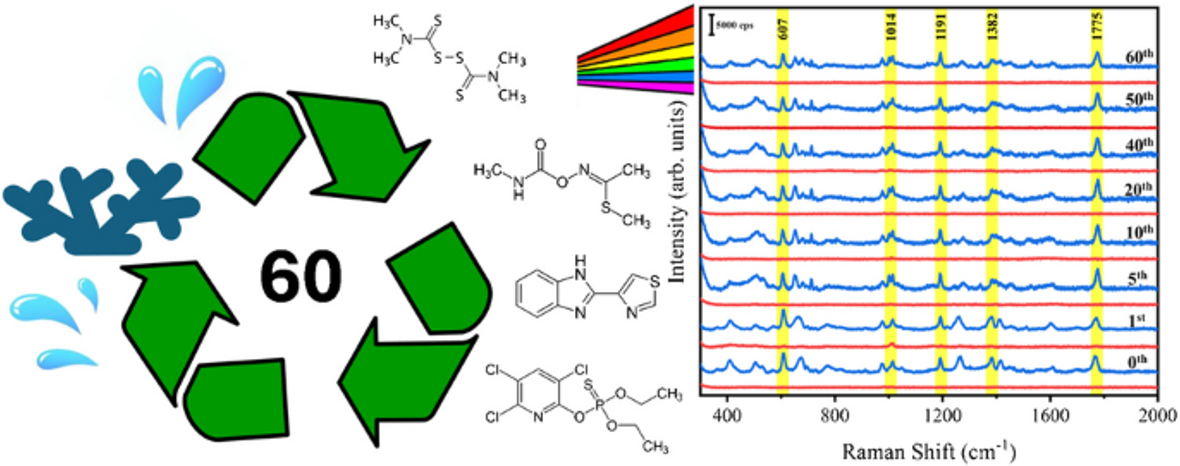
50th International Exhibition of Inventions Geneva, Geneva, Switzerland, 2025
Silver Medal
https://www.inventions-geneva.ch/en/awards-exhibiton/
Apr 12, 2025
We have developed an advanced intelligent irrigation system utilizing our spectral technology for soil condition monitoring to meet the growing demand for adaptive, technology-driven irrigation solutions in modern agriculture and horticulture.

Biophysics Week, Biophysical Society, 2025
Co-Chair, Bridging Membrane Dynamics and Single-Molecule Insights Virtual Symposium
https://www.biophysics.org/biophysics-week#/
Mar 24, 2026
Co-hosted by Prof. Yongli Zhang (Yale) and Prof. Jinqing Huang (HKUST), the 3-day online symposium featured insightful talks and engaging discussions that explored the mysteries of membrane fusion and fission, as well as the captivating movements of proteins, nucleic acids, and lipids, successfully attracting over 150 attendees from various countries.
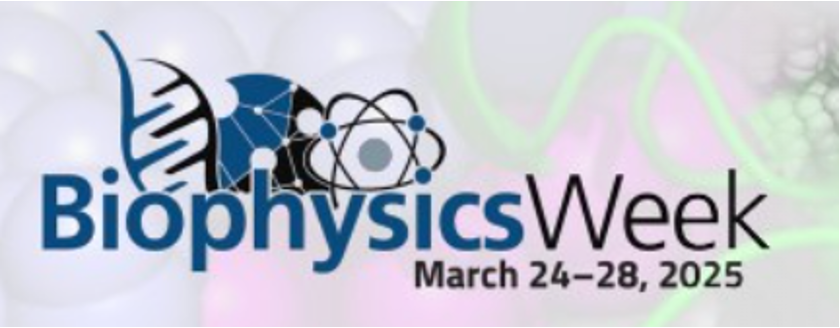
New Manuscript Accepted: ACS Appl. Mater. Interfaces 2025, 17, 11, 16287–16379.
Manuscript titled “Surface-Enhanced Raman Spectroscopy for Biomedical Applications: Recent Advances and Future Challenges”was accepted for publication in ACS Applied Materials & Interfaces.
https://doi.org/10.1021/acsami.4c17502
Feb 24, 2025
In this collaborative work, we summarize the development of emerging instrumentation that combines optical trapping techniques with surface-enhanced Raman spectroscopy (SERS) for biomedical applications. This review highlights the key advancements in this field and presents our own recent contributions to the development of these powerful analytical tools for sensitive detection and characterization in various biomedical research areas.

Biophysical Society Annual Meeting (BPS 2025), Los Angeles, United States, 2025
Symp Select Speaker
https://www.biophysics.org/2025meeting#/
Feb 19, 2025
Jinqing gave a talk on α-synuclein phase separation and aggregation, Shijia presented a poster on DNA-small molecule recognition, and Xiaohui prepared a poster on DDX21 helicase and RNA polymerase II. Amazing showcases of our cutting-edge research!
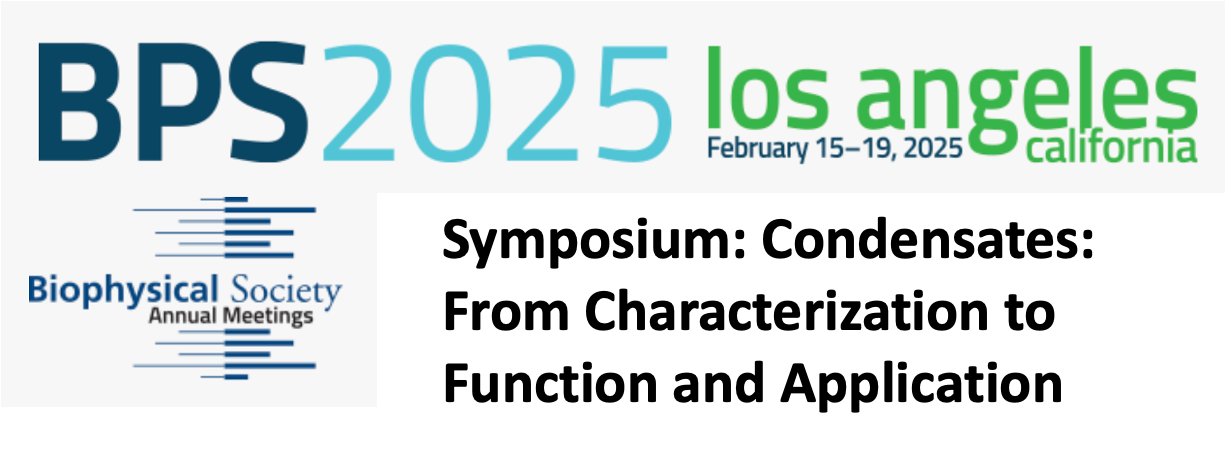
New Manuscript Accepted: Matter 2024, 7 (12), 4356-4372.
Manuscript titled “Antibiofilm and pH-responsive properties of nature-derived mucin biomaterials and their potentials for chronic wound care”was accepted for publication in Matter.
https://doi.org/10.1016/j.matt.2024.09.002
Dec 4, 2024
In this collaborative work, we combine biophysical spectroscopy and imaging techniques to investigate interactions between mucin biomaterials and bacterial membranes, providing groundwork for developing better chronic wound treatments.

11th Asian Biological Inorganic Chemistry Conference, Guilin, China, 2024
Invited Speaker
https://asbic11.com/
Dec 3, 2024

HKUST Tour with Prof. Popp (Leibniz Institute of Photonic Technology, Friedrich-Schiller-University Jena) and Prof. Fang (Oregon State University).
https://video.ust.hk/watch?video=56AAE4934931D194
Nov-Dec, 2024

New Manuscript Accepted: ChemBioChem 2024, 25 (24), e202400598.
Manuscript titled “Distinct Effects of SARS-CoV-2 Protein Segments on Structural Stability, Amyloidogenic Potential, and α-Synuclein Aggregation”was accepted for publication in ChemBioChem.
https://doi.org/10.1002/cbic.202400598
Oct 31, 2024

New Manuscript Accepted: Angew. Chem., Int. Ed. 2024, 136 (50), e202411105.
Manuscript titled “Red-Shifting B12-Dependent Photoreceptor Protein via Optical Coupling for Inducible Living Materials”was accepted for publication in Angewandte Chemie International Edition.
https://doi.org/10.1002/ange.202411105
Sep 6, 2024
In this collaborative work, we use our integrated optical tweezers-Raman spectroscopy platform to excite and control and characterize the novel protein-protein interactions for inducible living materials.
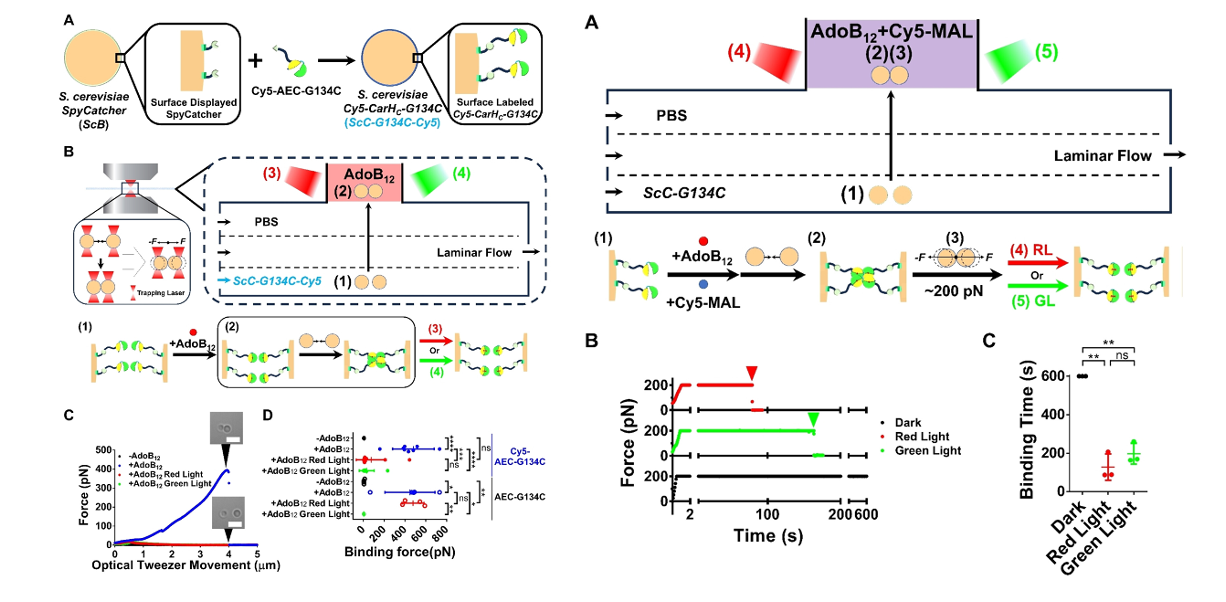
American Chemical Society Meeting (ACS Fall 2024), Denver, United States, 2024
Invited Speaker
https://www.acs.org/meetings/acs-meetings/future-meetings.html
Aug 18, 2024

Our group was awarded General Research Fund (GRF) grant. We thank Research Grants Council (RGC) Hong Kong for funding!
Jul 1, 2024

3rd National Conference on Raman-Based Biomedical Application, Shanghai, China, 2024
Invited Speaker
http://www.htcis.net/MeetingMain/Index/NCRBA
Mar 28, 2024

King Wai (Gordon) was awarded Best Teaching Assistant Award. Congratulations!
Feb 23, 2024

Jinqing was elected as Co-Chair 2026 for Single-Molecule Forces, Manipulation and Visualization Subgroup, Biophysical Society. Congratulations!
https://www.biophysics.org/subgroups/single-molecule-forces-manipulation-visualization
Feb 10, 2024
Weaving Remarkable Memories Together!

Biophysical Society Annual Meeting (BPS 2024), Philadelphia, United States, 2024
Session Co-Chair and Platform Speaker
https://www.biophysics.org/2024meeting#/
Feb 10, 2024

New Manuscript Accepted: Nat. Commun. 14, 6996 (2023).
Manuscript titled “Efficient optical plasmonic tweezer-controlled single-molecule SERS characterization of pH-dependent amylin species in aqueous milieus” by Fu and Chi et al was accepted for publication as full paper in Nature Communications
https://doi.org/10.1038/s41467-023-42812-3
Oct 21, 2023
In this work, we construct a simple plasmonic junction between two silver nanoparticle-coated silica microbeads to exert optical plasmonic trapping upon on/off laser excitation to control the formation of dynamic nanocavity with high turnover efficiency. Since both optical plasmonic trapping and SERS techniques are surface-sensitive relying on nanostructured substrates, it overcomes the optical diffraction limit to confine the position of the plasmonic nanocavity and reduce the SERS active-detection volume for huge SERS enhancements at the single-molecule sensitivity. More importantly, it is the first time to use on-and-off trapping control of a dynamic nanocavity to enlarge high-throughput sampling capacity for efficient single-molecule SERS detections and characterize pH-dependent amylin (hIAPP) species with statistically significant sampling sizes. Statistics of its structural features at the single-molecule level reconstructs its ensemble structures and brings unique information on population and probability of different conformations, which could directly establish the linkage between SERS characterizations and MD simulations to reveal the structural heterogeneity of amylin.

SciX 2023 Conference, FACSS - Federation of Analytical Chemistry and Spectroscopy Societies, Sparks, United States, 2023
FACSS Innovation Awards Finalist (Invited Speaker)
https://scixconference.org/FACSS-INNOVATION-AWARDS/
Oct 8, 2023

The 8th Asian Spectroscopy Conference (ASC2023), Japan, 2023
Invited Speaker
http://www2.riken.jp/lab/spectroscopy/ASC2021/index.html
Sep 3, 2023
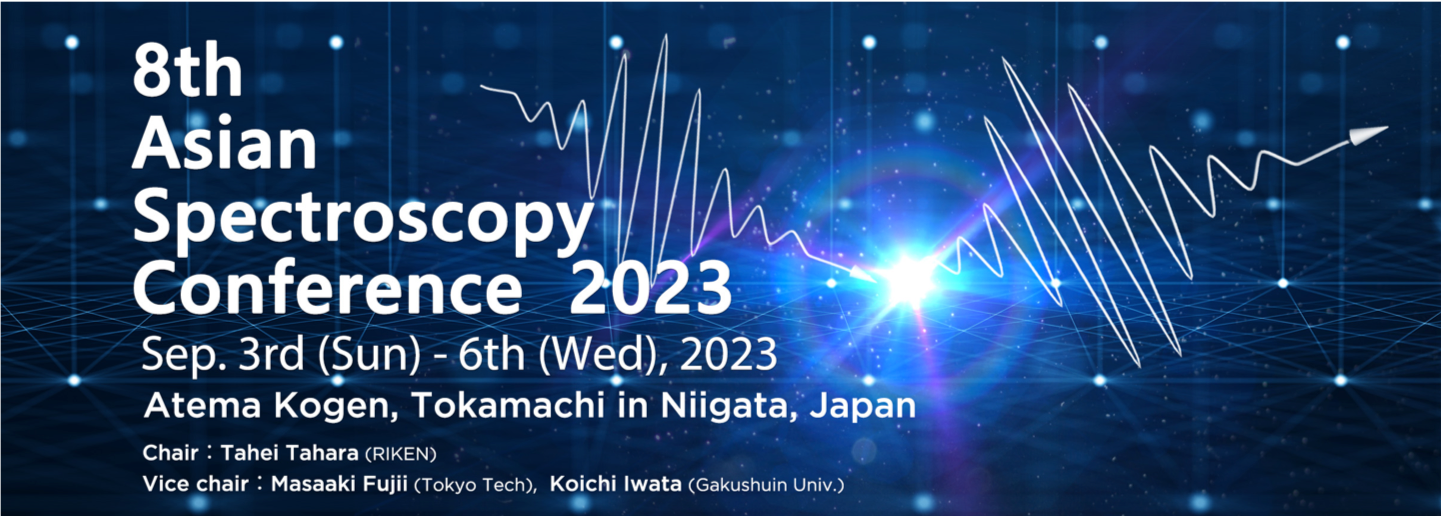
Workshop - Frontier of Nucleic Acid Science and Technology, Hong Kong, 2023
Co-Chair, Organizing Committee
https://www.soireeacademy.org/2023-program
Aug 11, 2023

Our group was awarded General Research Fund (GRF) grant. We thank Research Grants Council (RGC) Hong Kong for funding!
Jul 1, 2023

Asia International Innovation Invention Exhibition, Hong Kong Federation of Innovative Technologies and Manufacturing Industries, Hong Kong, 2023
Asia International Innovation Invention Award -- Gold Award
https://www.fitmi.org.hk/
Jun 23, 2023
We collaborate with group alumni to pioneer an award-winning and patented technique on portable substance analysis based on computer vision, spectroscopy, and artificial intelligence.

International Workshop on Biophysics and Soft Matter, Hong Kong, 2023
Invited Speaker
http://personal.cityu.edu.hk/liangdai/conference/
May 26, 2023
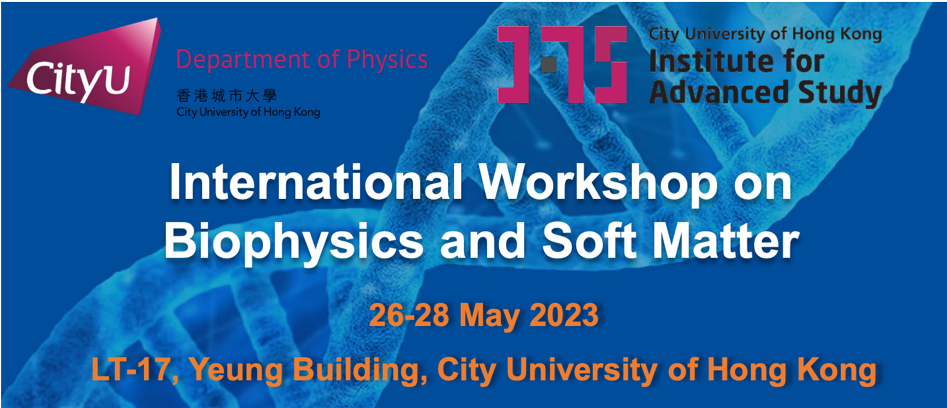
Vince was awarded HKUST Redbird Academic Excellent Award. Congratulations!
May 12, 2023

Supramolecular Materials
Editorial Board Member
https://www.keaipublishing.com/en/journals/supramolecular-materials/
May 9, 2023
Supramolecular Materials is a publication of peer-reviewed research. It covers all aspects of these materials, which are based on supramolecular interactions or self-assembly. The journal welcomes submissions of research articles/communications, perspectives/concepts, and reviews on both fundamental insight into supramolecular interactions, and demonstrations of functional supramolecular systems. The journal publishes research on design/fabrication/characterization of non-covalently interactive supramolecular systems, with diverse features such as being dynamic, reversible, self-adaptive, stimulus-responsive etc.

New Manuscript Accepted: Anal. Bioanal. Chem. 2023, 415, 3243–3253.
Manuscript titled “Tunable lipid-coated nanoporous silver sheet for characterization of protein-membrane interactions by surface-enhanced Raman scattering (SERS)” was accepted for publication in Analytical and Bioanalytical Chemistry.
https://doi.org/10.1007/s00216-023-04701-y
Apr 12, 2023
In this work, we develop an analytical platform that provides consistent SERS enhancements and enables independent control of specific membrane properties, in particular, lipid packing defects, to directly characterize protein structures, leveraging the precise controllability of lipid lateral pressure by a Langmuir–Blodgett (LB) technique and the sensitive detection capability of nanoporous-based SERS substrate. Interestingly, alpha-synuclein folded into the alpha-helical structure on negatively charged lipid heads, while the exposure of hydrophobic lipid tails induced its beta-sheet formation in both monolayer lipid tails and low-pressure liquid phase lipid bilayer, which might be linked to its misfolded states for membrane disruptions associated with Parkinson’s disease.

New Manuscript Accepted: Chem. Sci. 2023,14,801-811.
Manuscript titled “Construction of multiphasic membraneless organelle towards spontaneous spatial segregation and directional flow of biochemical reactions” was accepted for publication in Chemical Science, featured as Cover Article.
https://doi.org/10.1039/D2SC05438H
Nov 29, 2022
In this work, we use optical tweezers to study the linear viscoelastic behaviour of inner and outer compartments of LD-IPH/HD-IPH/polyU droplets as determined by passive microrheology, facilitating the optimizations of multiphasic membraneless organelles towards spontaneous spatial segregations and directional flow of biochemical reactions.

New Manuscript Accepted: Sci. Adv. 2022, 8 (44), eade0073.
Manuscript titled “Directed assembly of genetically engineered eukaryotic cells into living functional materials via ultrahigh-affinity protein interactions” was accepted for publication in Science Advances.
https://www.science.org/doi/10.1126/sciadv.ade0073
Nov 4, 2022
In this work, we use optical tweezers to assemble single living cells into desired structures that can continue grow and demonstrate enhanced functions.
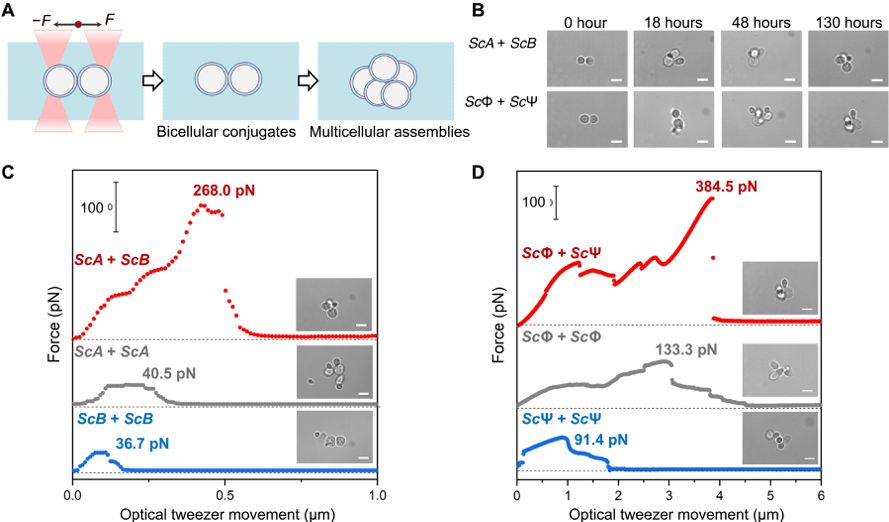
New Manuscript Accepted: J. Phys. Chem. Lett. 2022, 13 (45), 10642–10648.
Manuscript titled “Moderate Binding between Two SARS-CoV-2 Protein Segments and α-Synuclein Alters Its Toxic Oligomerization Propensity Differently” was accepted for publication in The Journal of Physical Chemistry Letters, featured as Cover Article.
https://doi.org/10.1021/acs.jpclett.2c02278
Nov 4, 2022
In this work, we study the α-synuclein oligomerization upon the binding of the receptor-binding domain (RBD) of the spike protein and the nine-residue segment (SK9) of the envelope protein of SARS-CoV-2.
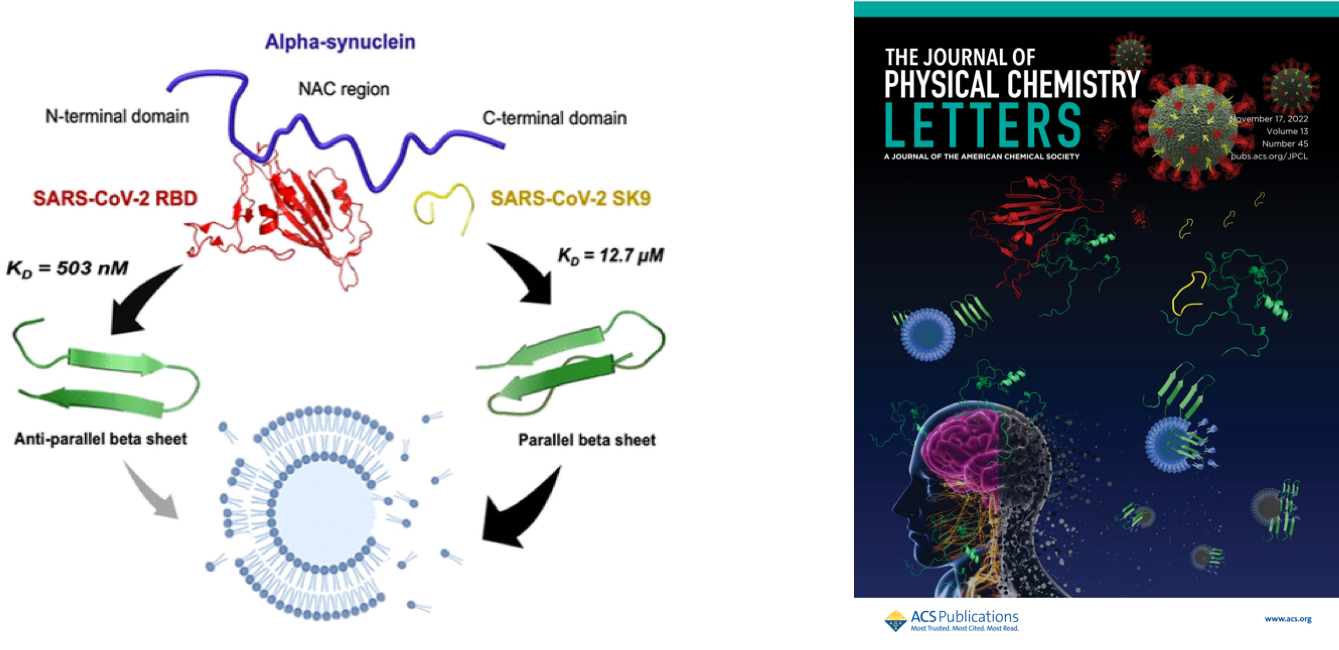
Chinese Chemical Society (CCS), Woman’s Chemists Committee
Elected Committee Member
Oct 30, 2022
Empowering Women in Chemistry!

SciX 2022 Conference, FACSS - Federation of Analytical Chemistry and Spectroscopy Societies, United States (Greater Cincinnati), 2022
Invited Speaker
https://scixconference.org/
Oct 2, 2022
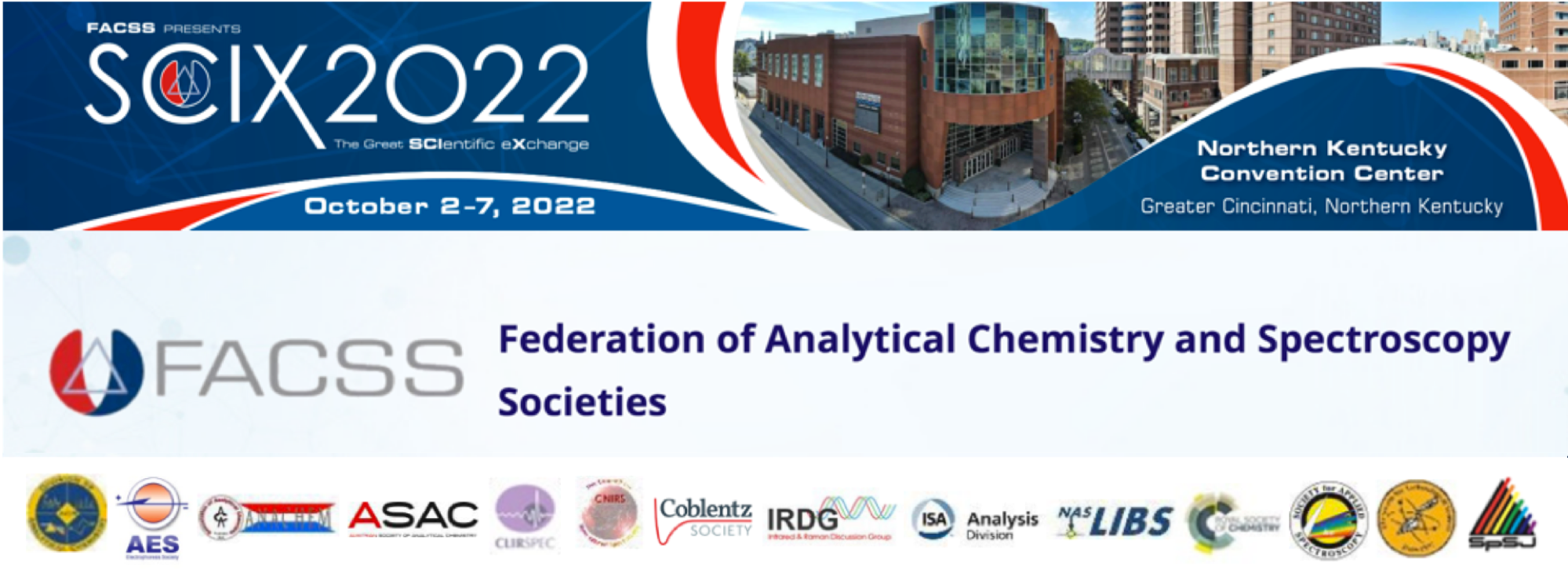
Our group was awarded General Research Fund (GRF) grant. We thank Research Grants Council (RGC) Hong Kong for funding!
Jul 1, 2022

Croucher Advanced Study Institute 2022, Metals in Biology and Medicine: From Molecular Imaging to Drug Resistance, Hong Kong (In-Person & Online), 2022
Invited Speaker
https://metalasi-chemsym.hku.hk/
Jun 21, 2022

New Manuscript Accepted: Nat. Commun. 2022, 13, 3197 (2022).
Manuscript titled “Controlling synthetic membraneless organelles by a red-light-dependent singlet oxygen-generating protein” was accepted for publication in Nature Communications.
https://doi.org/10.1038/s41467-022-30933-0
May 19, 2022
In this work, we use optical tweezers coupled with an extra excitation source to control the properties of synthetic membraneless organelles at single-condensate level.

New Manuscript Accepted: J. Vis. Exp. 2022, 184, e63862.
Manuscript titled “Optical trapping of plasmonic nanoparticles for in situ surface-enhanced Raman spectroscopy characterizations” was accepted for publication in Journal of visualized experiments (invited submission for the special issue of Methods Collection“Advances in Optical Trapping Biophysics”).
https://dx.doi.org/10.3791/63862
May 10, 2022
In this work, we demonstrate how to couple optical trapping manipulations and surface-enhanced Raman spectroscopy measurements in a home-build instrumental set-up.
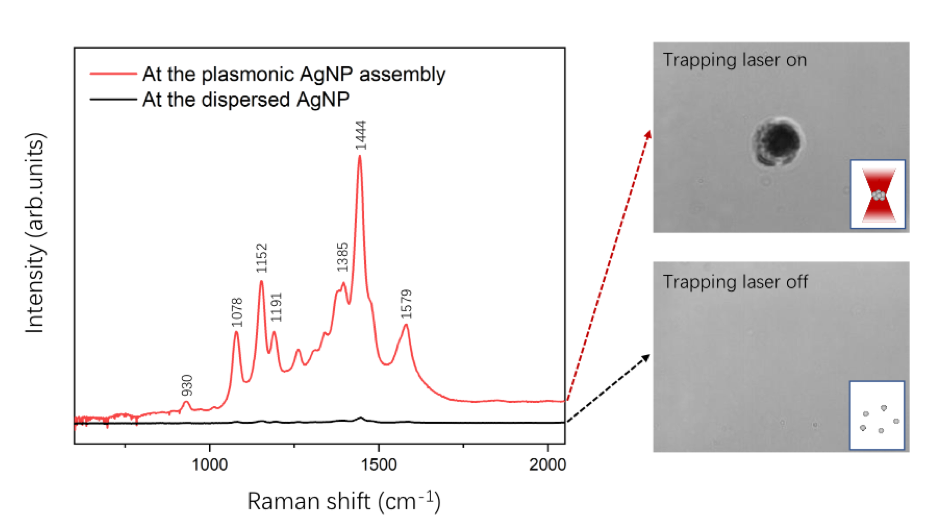
Vince was awarded HKUST Redbird Academic Excellent Award. Congratulations!
May 2, 2022

New Manuscript Accepted: ACS Cent. Sci. 2022, 8, 4, 493–500.
Manuscript titled “Minimalist Design of an Intrinsically Disordered Protein-Mimicking Scaffold for an Artificial Membraneless Organelle” was accepted for publication in ACS Central Science, featured as Cover Article.
https://doi.org/10.1021/acscentsci.1c01021
April 1, 2022
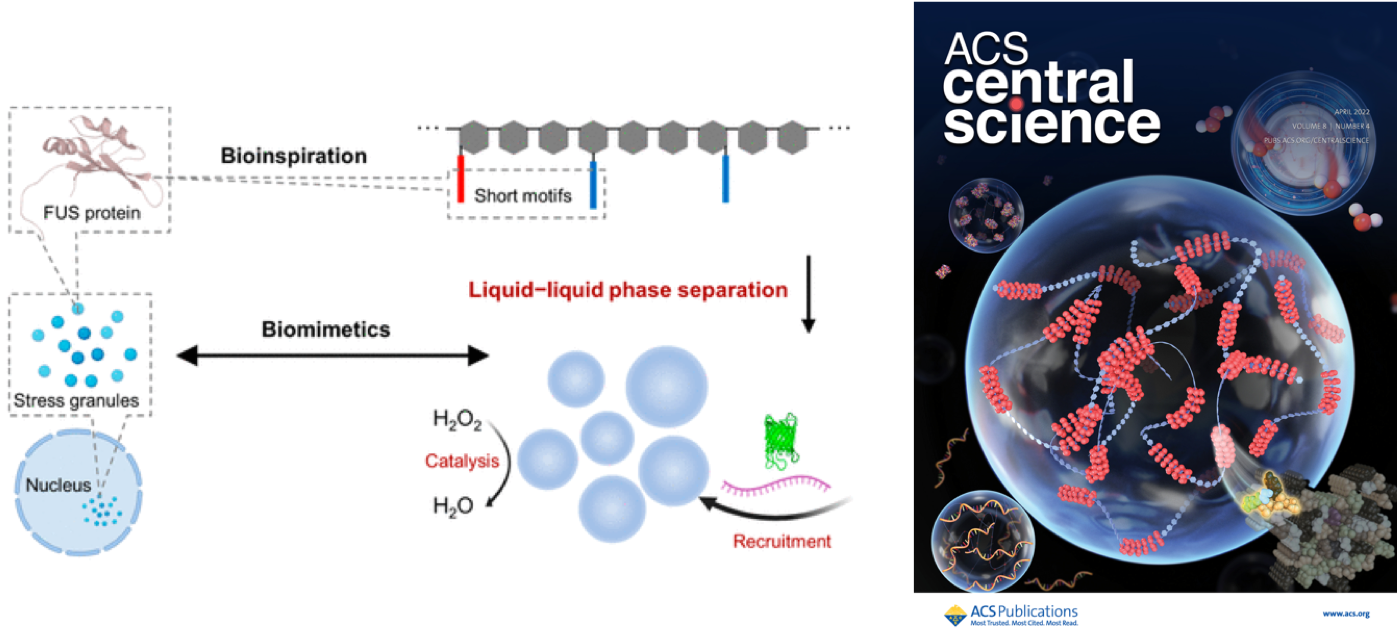
Biophysical Society Annual Meeting, United States (San Francisco), 2022
Invited Speaker
https://www.biophysics.org/2022meeting#/
Feb 19, 2022
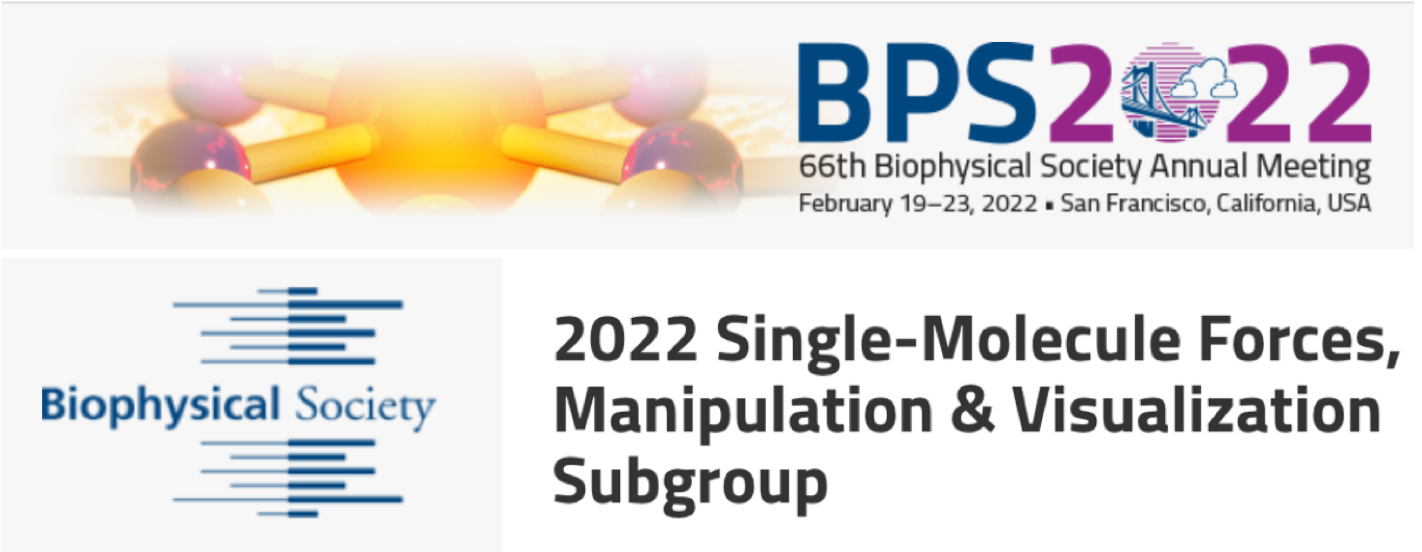
New Manuscript Accepted: Proc. Natl. Acad. Sci. U.S.A. 2022, 119, e2113991119.
Manuscript titled “A SURF4-to-proteoglycan relay mechanism that mediates the sorting and secretion of a tagged-variant of sonic hedgehog” was accepted for publication in Proceedings of the National Academy of Sciences of the United States of America.
https://doi.org/10.1073/pnas.2113991119
Feb 1, 2022

New Manuscript Accepted: J. Alloys Compd. 2022, 897, 162731.
Manuscript titled “Bright red-emitting P, Br co-doped carbon dots as “OFF-ON” fluorescent probe for Cu2+ and L-cysteine detection” was accepted for publication in Journal of Alloys and Compounds.
https://doi.org/10.1016/j.jallcom.2021.162731
Jan 1, 2022
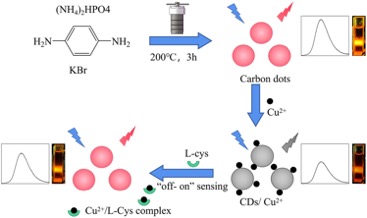
Our editorial topic with Frontiers in Photonics (Special Issue) on “Biophotonic manipulation, imaging, and sensing” has been launched. We welcome submissions!
Guest Editor
https://www.frontiersin.org/journals/photonics
Dec 6, 2021

Our collaborators and our group were awarded National Natural Science Foundation of China (NSFC)/Research Grants Council (RGC) of Hong Kong Joint Research Scheme (JRS) grant. We thank Research Grants Council (RGC) Hong Kong for funding!
Dec 1, 2021

Lumicks Dynamic Single-Molecule Webinar Series, The Netherlands (Online), 2021
Invited Keynote Speaker
https://lumicks.com/knowledge/webinar-dynamic-single-molecule/
Jul 28, 2021

Our group was awarded General Research Fund (GRF) grant. We thank Research Grants Council (RGC) Hong Kong for funding!
Jul 1, 2021

New Manuscript Accepted: Chem. Commun. 2021, 57, 6979-6982.
Manuscript titled “Effective ACE2 peptide–nanoparticle conjugation and its binding with the SARS-Cov-2 RBD quantified by dynamic light scattering” by Mesias et al was accepted for publication as communication paper in Chemical Communications, featured as Cover Article and included in WHO global research on coronavirus disease (COVID-19).
https://doi.org/10.1039/D1CC02267A
Jun 19, 2021


New Manuscript Accepted: Nat. Commun. 12, 1292 (2021).
Manuscript titled “Optical tweezers-controlled hotspot for sensitive and reproducible surface-enhanced Raman spectroscopy characterization of native protein structures” by Dai et al was accepted for publication as full paper in Nature Communications, mentioned in news and blogs (e.g. EurekAlert!, Photonics,com, Azooptics.com, Drug Target Review, ScienMag, Bioengineer.org, Phys.org. Alzforum, etc.).
https://doi.org/10.1038/s41467-021-21543-3
Jan 28, 2021
In this work, we integrate optical tweezers manipulation and Raman spectroscopic detection into a novel platform to create, visualize, and manipulate hotspot between two Ag nanoparticle-coated silica beads, making it convenient to precisely control and adjust SERS enhancement in the real time to achieve tunable and reproducible SERS enhancements. With the single-molecule sensitivity, this new approach addresses the challenges in identifying protein structures at low concentrations. For example, alpha-synuclein is a typical intrinsically disordered protein that lacks stable secondary structures as monomers and has the propensity to form oligomers and amyloid fibrils implicated in Parkinson's disease pathogenesis. However, its aggregation mechanism remains unclear, due to the transient nature and low population of diverse oligomeric intermediates co-existing in dynamic mixtures that hinder their structural characterization by ensemble measurements. By minimizing detection volume and time, our platform directly identifies the beta-sheet containing alpha-synuclein transient species among its dominating unstructured monomers, which could provide unique insights into the amyloid aggregations associated with neurodegenerative diseases.

Asian Spectroscopy Conference Steering Committee
Committee Member(Tenure 2021-2025)
Jan 12, 2021

The 7th Asian Spectroscopy Conference (On-line), Singapore, 2020
Invited Speaker
https://ebook.ntu.edu.sg/proceedings-of-the-7th-asian-spectroscopy-conference-asc-2020.html
Dec 8, 2020

New Manuscript Accepted: J. Phys. Chem. B 2020, 124, 42, 9365–9370.
Manuscript titled “Single-molecule mechanical unfolding of AT-rich chromosomal fragile sites DNA hairpins: Resolving the thermodynamic and kinetic effects of single G-T mismatch” by Li et al was accepted for publication as full paper in The Journal of Physical Chemistry B, featured as Cover Article.
https://doi.org/10.1021/acs.jpcb.0c06954
Sep 24, 2020

Our collaborated project was awarded General Research Fund (GRF) grant. We thank Research Grants Council (RGC) Hong Kong for funding!
Jul 1, 2020

New Manuscript Accepted: Analyst, 2020,145, 5158-5165.
Manuscript titled “Highly reusable nanoporous silver sheet for sensitive SERS detection of pesticides” by Chi et al was accepted for publication as full paper in Analyst, featured as Cover Article.
https://doi.org/10.1039/D0AN00999G
June 19, 2020
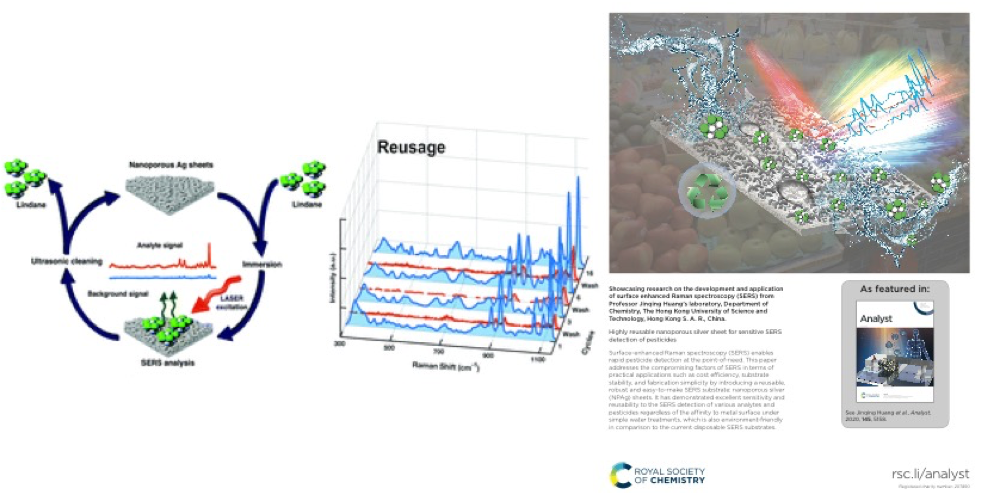
The 11th Asian Conference on Ultrafast Phenomena (ACUP 2020)
Invited Speaker
http://acup2020.htcis.net
Jan 12, 2020

The 7th Asian Spectroscopy Conference 2019 (ASC 2019)
Member, Organizing Committee
http://asc2019.csp.escience.cn/dct/page/1
Dec 2, 2019
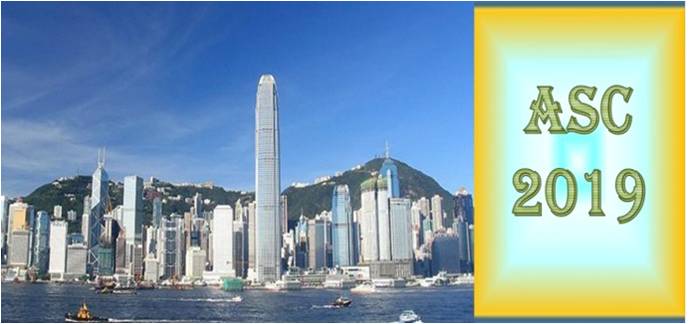
NSFC-BHKAEC Joint Symposium on Chemistry for New Frontiers
Invited Speaker
https://chemistry.hku.hk/download/nsfc_bhaec/index.html
Jul 29, 2019

Our group was awarded General Research Fund (GRF) grant. We thank Research Grants Council (RGC) Hong Kong for funding!
Jul 1, 2019

The 1st Dynamic Single-Molecule Meeting China
Speaker
https://dsmm-china.com/en/home/
Jun 22, 2019
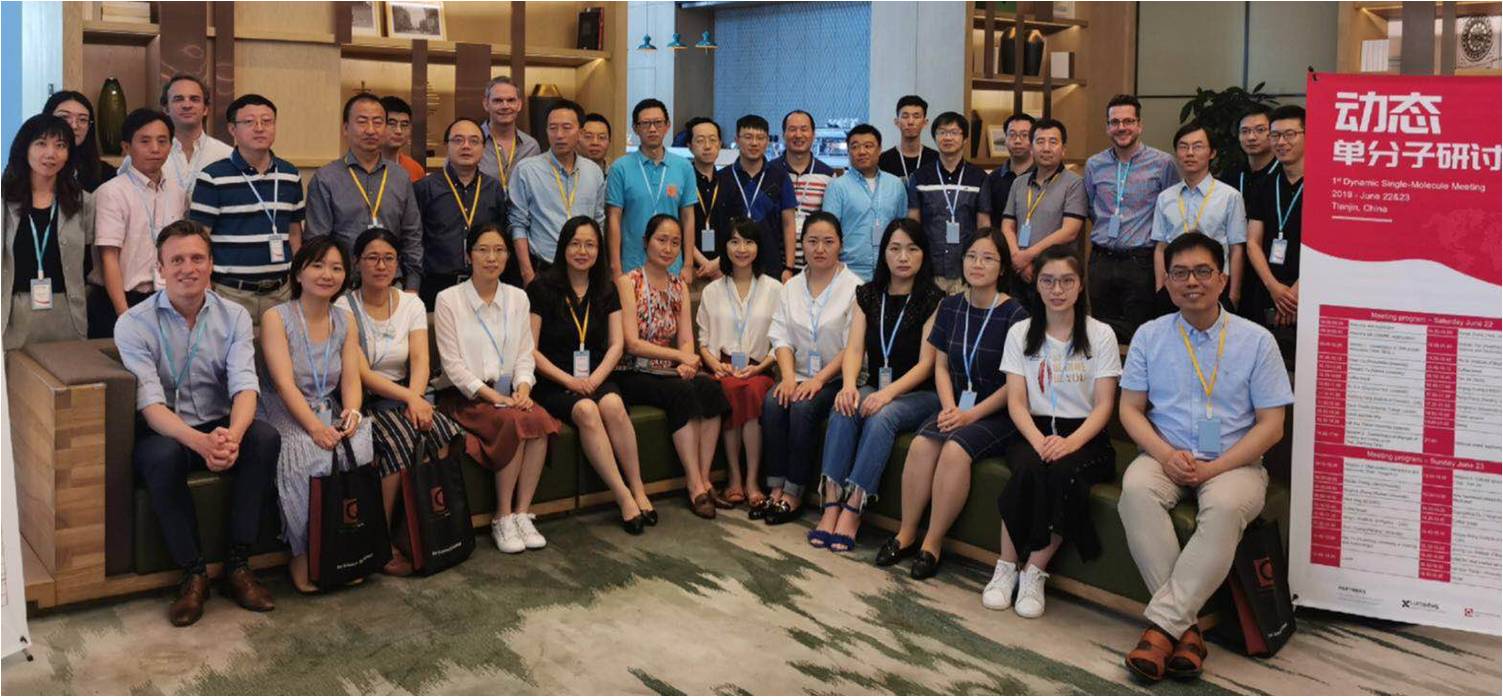
Zhibo was awarded HKUST outstanding students and Jinqing was nominated as Teachers I like. Congratulations!
May 11, 2018

Food Tour with Prof. Kukura (University of Oxford)
April 29, 2018

The 25th Symposium on Chemistry Postgraduate Research in Hong Kong
Member, Organizing Committee
http://chempgsym.ust.hk/
April 28, 2018
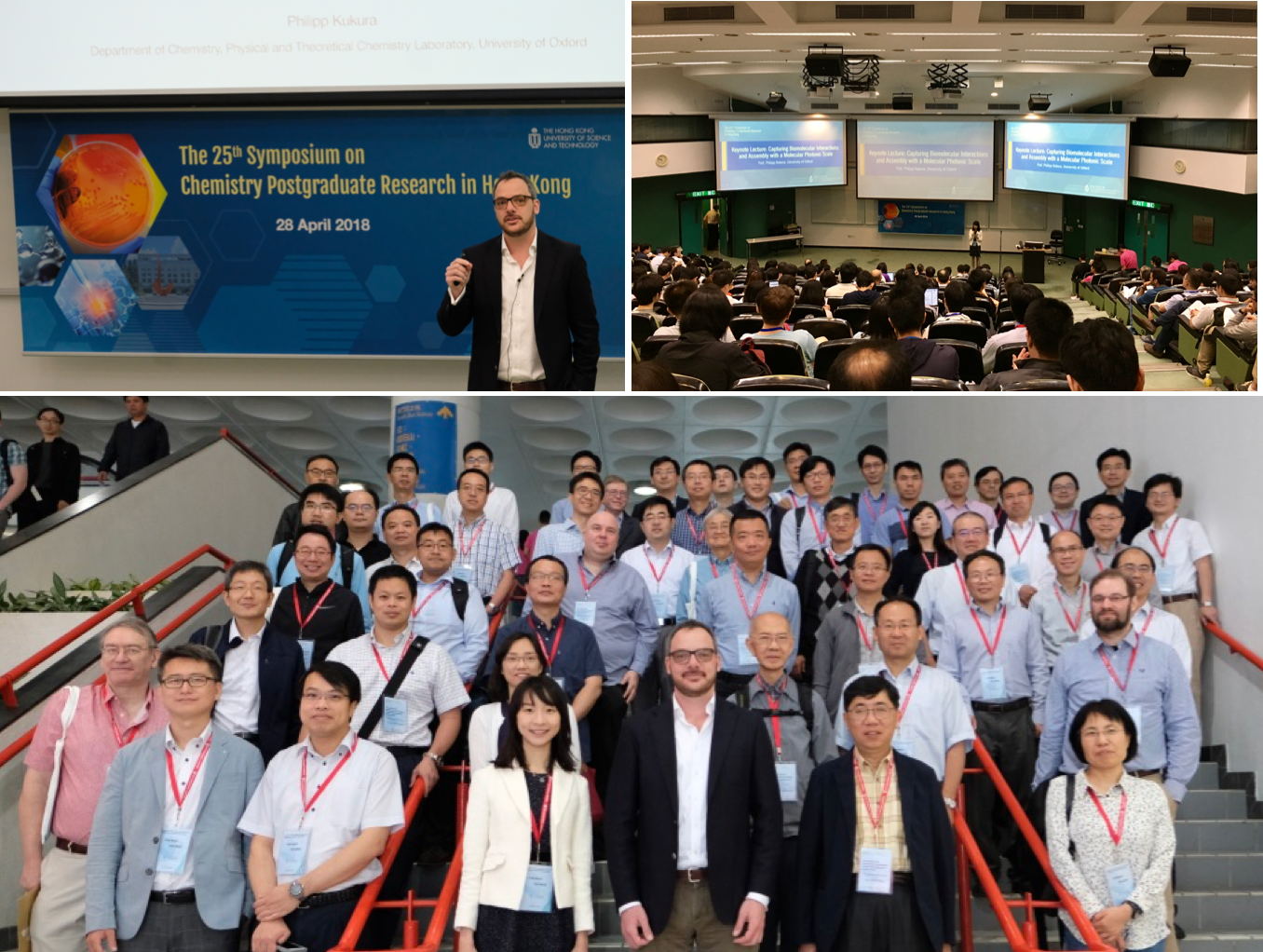
ACS on Campus-HKUST
Featured Speaker
https://acsoncampus.acs.org/events/hong-kong-university-of-science-and-technology/
April 19, 2018

Huang lab has officially launched and now we are hiring.
August 1, 2017
